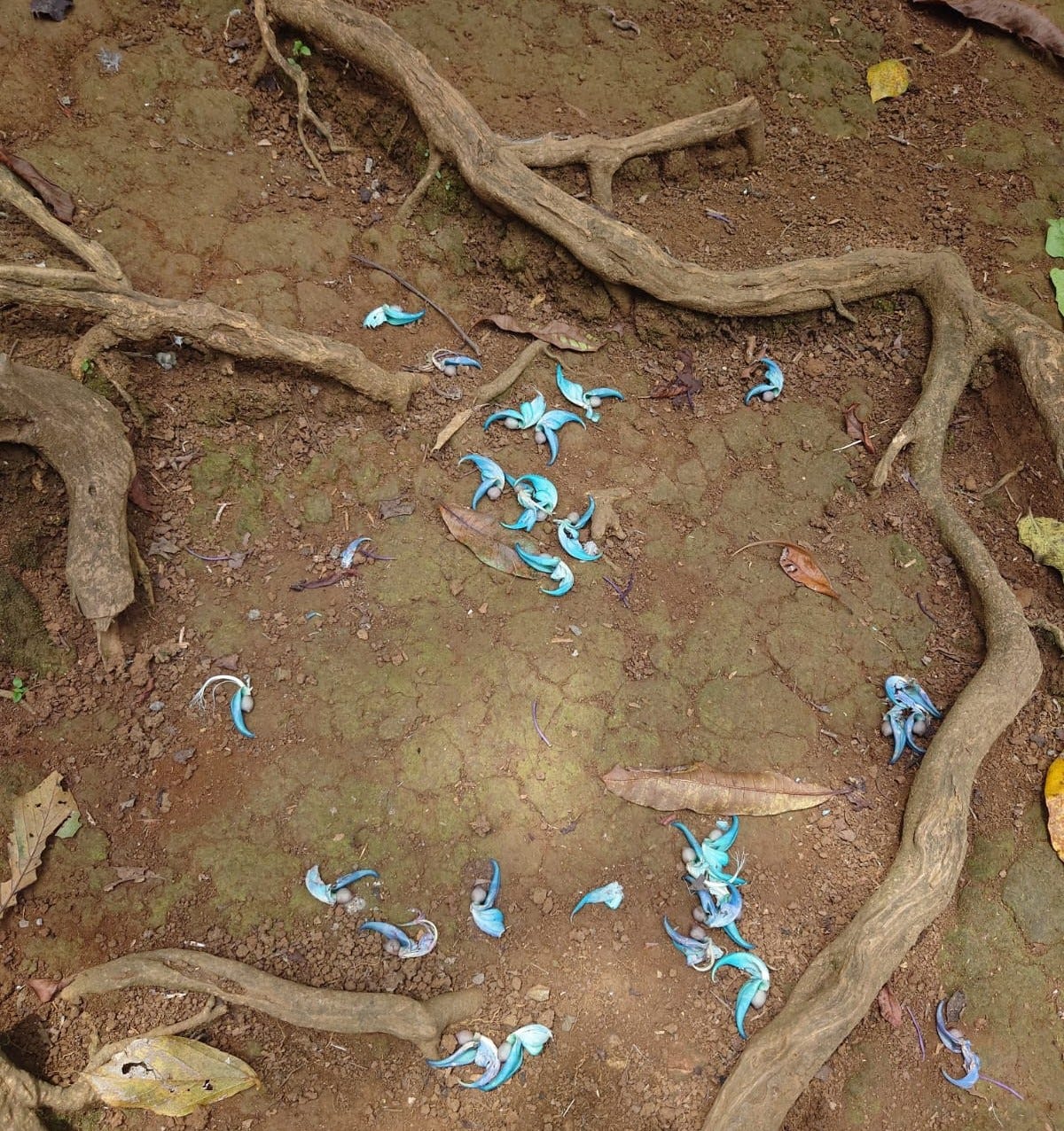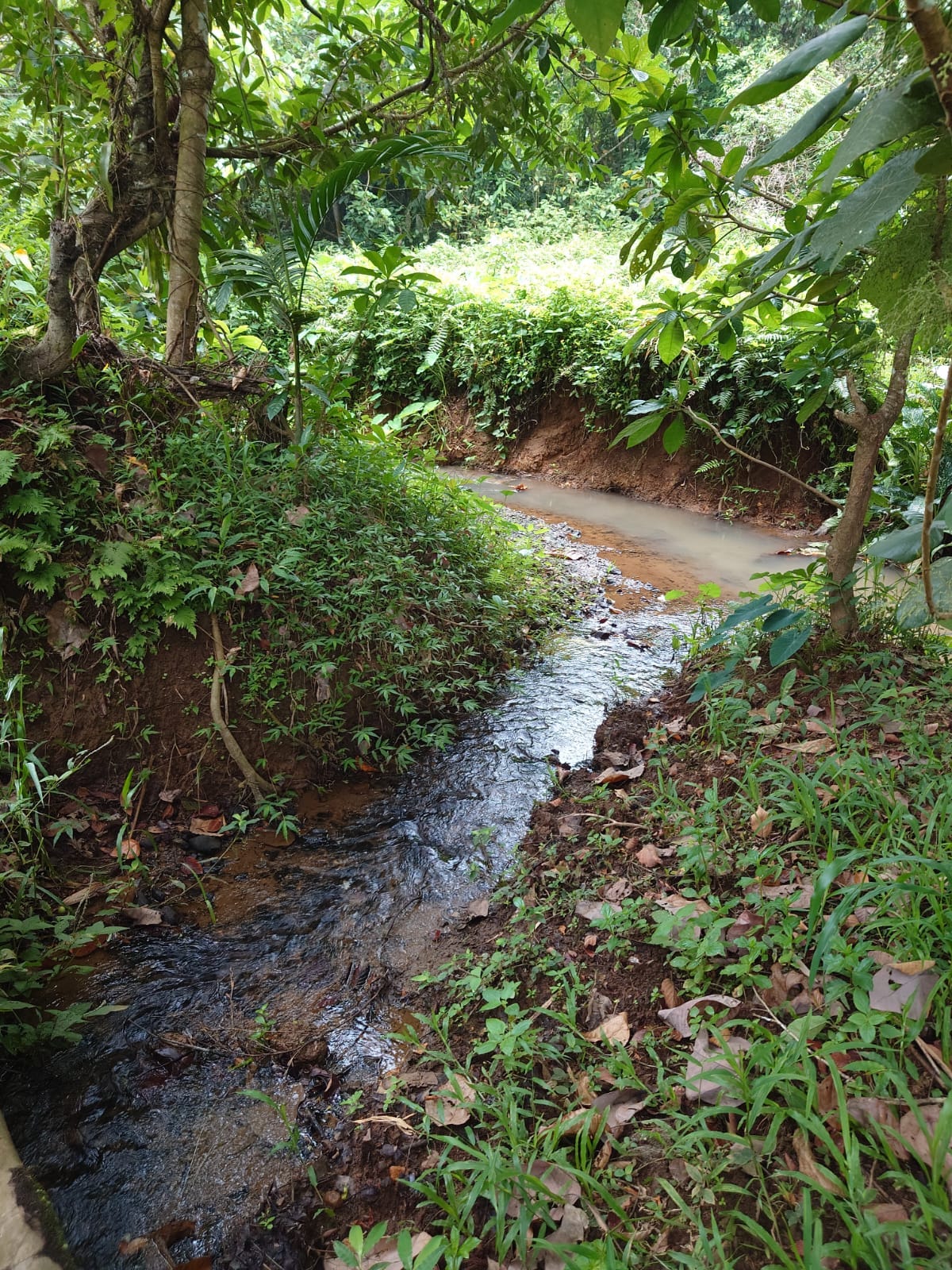How the land shapes our identity
Our lands and their spirits hold an imprint that shapes our identities.
Part I – Ugat (Roots)
I remember distinctly the feeling of holding a hot, fresh piece of Budbud on my palms and peeling off the banana leaves gently sticking to the brown and white sticky rice. Lola Pareng, my paternal grandmother, would then come into the dining room holding a tray of hot chocolate to pair with our Budbud. These were my holiday mornings in Balamban, Cebu when I was a child.
As I reflect on land and identity, my memories guide me back to my roots, unearthing moments from childhood, and how the lands we visit shape our beings.
My paternal grandparents are from Balamban, a first-class municipality in the province of Cebu with an elevation of 1,240 feet. As a child, I recall my parents, brother, and I traveling high up the mountains on a frightening, winding highway so we could visit our grandparents in Balamban every year. This freeway is called the Cebu Transcentral Highway, which to my 10-year-old memory had panoramic mountain views during the day and life-threatening dark roads at night.
Apart from trips to the ocean and playtime with our cousins, what I’ve always looked forward to during those holidays were the food and delicacies unique to Cebu. The Budbud (“bood-bod”) is one of them; a rice cake snack usually made of glutinous rice, coconut milk, and sugar wrapped in banana leaves famous in the Visayan region. Its recipe varies by province or location, but what I recall is a chocolate, rice, and nuts mixture that brings me fond memories of people who are long gone but not forgotten.
Recollections of the Budbud ignite stirrings of my grandparents and a lineage who, according to my parents and some relatives, chose to settle on the Visayan Island for greener pastures and better living opportunities. Their memories and stories which were shaped together with the land they settled on now live in the fringes of my bones. I carry my ancestors’ stories; I carry the story of the land deep within my cells.
Part 2 – Hugis (Shape)
We are moved and shaped by the land.
I would like to learn the reason why my ancestors from Mindanao chose to settle in Cebu more than 100 years ago. For now, I rest knowing that their journey in search of a better life has led me back here – back to them, through warm memories with my grandparents.
The Budbud is unique to its land, as the Cebuanos are unique to their own island. I find it curious how diverse human beings are because of the land where we come from – from the country we are born into, to the city, province, or country we choose to settle in – the land shapes our values, beliefs, culture, and our embodied being. We are not only shaped by the people we encounter in our lives, but we are shaped by the land we live on as well.
The delicacies and food unique to each province in the Philippines vary because of the weather and the richness and health of their soil. Have you noticed how suha (pomelo) harvested from Davao tastes different from suha planted in the Visayas regions? Each land is influenced by the natural rhythms of its weather. The soil’s abundance, or lack thereof, directly influences the kind of plants that will survive and thrive in these weather conditions. The kind of plants that flourish in one place produce flavors that are native to it, flavors that create a people’s voice, that birth a people’s language and their accent, that form a people’s preferences, that solidifies a people’s culture.
We are inextricably tied to the land. Our ancestors knew this with our national anthem, Lupang Hinirang, or Chosen Land. It is something I am proud of, an emblem of how my choices and actions today are entwined to the layered history of my motherland. What I do today and in my lifetime reflects my country’s voice. What I say and write are not only from me, but they too are woven by the memories, by the spirits of the lands that shaped me.
Part 3 – Buhay (Alive)
We are part of a living and breathing planet.
1Pre-colonial Filipinos and present-day Indigenous people in the Philippines and other countries have a resonating belief in mysticism and animism, the belief that all objects, places, creatures, even elements like air, wind, fire, and water possess a spiritual essence. All objects are animated; they are alive. This makes sense. The land is alive, the Earth is a living planet, and she allows life to continue through the soil where our food grows, and which nourishes our bodies.
If our ancestors and today’s indigenous people saw nature as animate with their own spirits, cutting down a single tree would mean hurting a living being. It would also mean harming that which gives us life. How we treat this Earth is how we treat ourselves. The absence of this indigenous wisdom and spiritual belief has disconnected human beings from nature and the land, and this separation has caused and is continuing to create today’s ecological crisis. The climate crisis is a crisis of spirit.
A worldview separated from the planet sees the Earth as a resource and an object to be extracted from rather than a living planet who we have a relationship with, and who longs for love and care the same way we do. This anthropocentric mindset is based on a system of capitalism that seeks to fill an unquenchable desire for more, with no satisfaction in sight. 2In 2010, the Philippines lost 13.2 mega hectares of natural forests or over 62% of land area. In 2022, we again lost 62.9 kilo hectare of natural forests, something perceivably unavoidable for a human-centered society with an ever-increasing population and a need for urban development.
This way of thinking reduces the land and its inhabitants into numbers and percentages. It is unfathomable how humanity is nearing the 3climate tipping point of 1.5C of global warming between 2026 and 2042, which can lead to irreversible impacts to all life on Earth. 4Humanity is now close to 420 parts per million (ppm) of carbon dioxide levels when before the Industrial Revolution, we were at 280 ppm. 5Experts believe that the additional CO2 emissions driven by human activity and an extractive society have put us in the midst of the sixth mass extinction.
Because the Earth is a living being, and if I were to listen to the cries of the Earth, it is clear to me why grief and despair pervades the consciousness of my generation. Empathy for a planet that’s burning, for a planet akin to a mother with her children killed, would come naturally. It would be no wonder how a deforested mountain is a graveyard of trees, with spirits in pain, crying for justice.
In a world that’s spiraling into an unknown future climate, it strengthens my own spirit knowing that the ancient wisdom that ties us to the land and to this Earth have been honored and kept sacred by indigenous people. I see in my own landscape emerging communities who honor our interbeing with the Earth. 6Many Filipinos today still believe that each land has spirits. The long-held ancestral belief and wisdom from indigenous people make them the best guardians and caretakers of the ancestral lands they inhabit.
Our lands and their spirits hold an imprint that shapes our identities. Coming back to the land of my childhood, to the land of my ancestors reminds me of where my true home lies, and that is Mother Earth.






